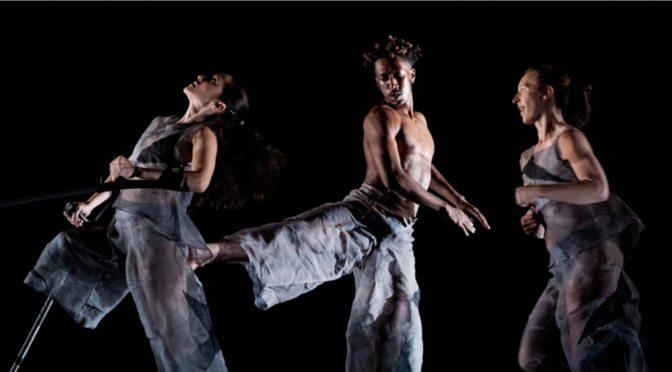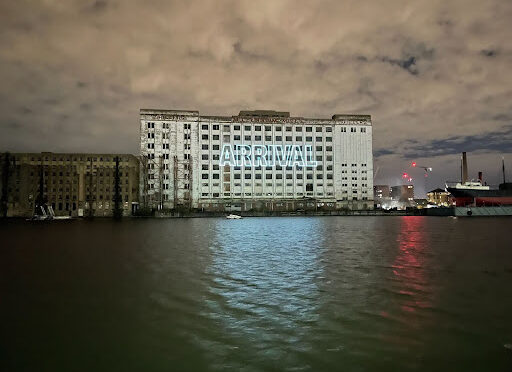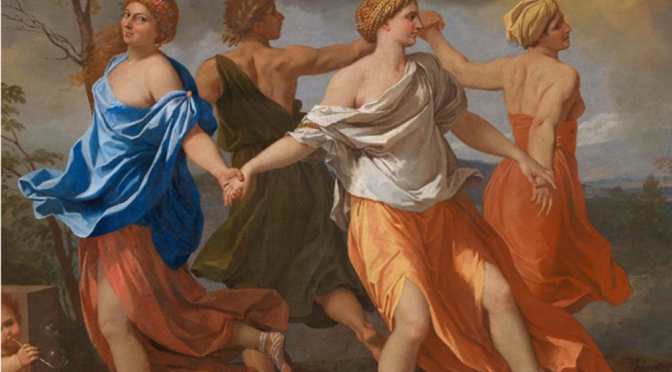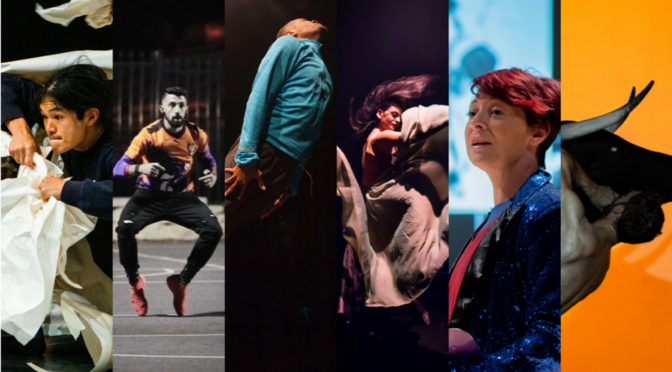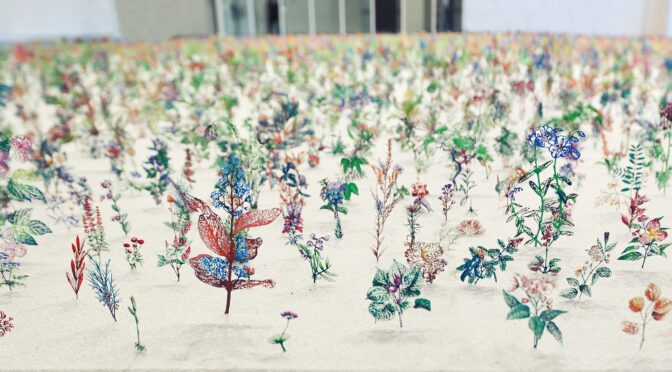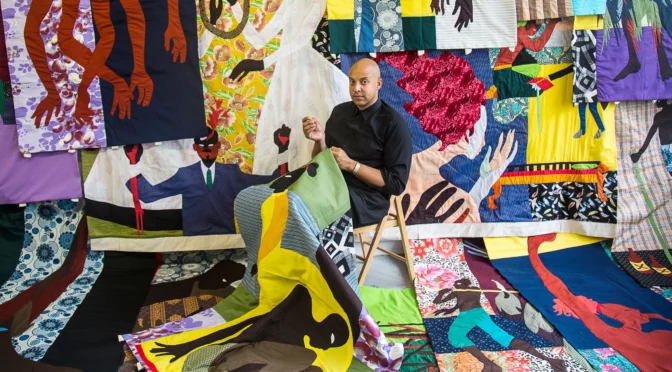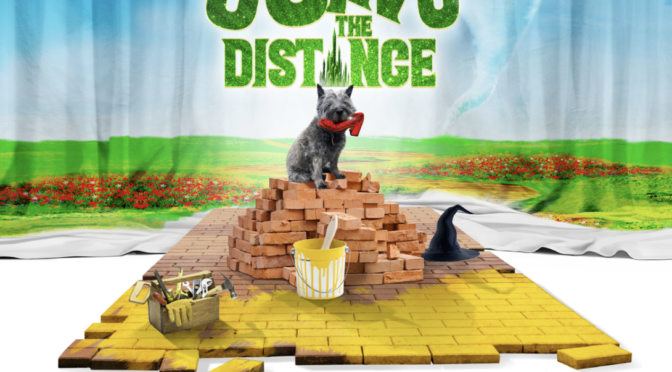This Autumn, Candoco dance company finally returns on stage with a double-bill of its signature choreography ‘Set and Reset’, as well as a brand new performance, ‘Last Shelter’. Although very distinct from one another, the two pieces are interconnected by an exploration of space and an instinct-driven action, all within a certain simplicity and style typical of the dance company. The dancers gave their whole hearts and bodies in the performance, which received a well-deserved standing ovation from the public at the end of the show.
Candoco dance company has a tradition of creating its own choreographies, specially adapted to its disabled dancers, who are perfectly integrated into the flow of the choreography. However, ‘Set and Reset’ is an exception to the rule, as it is a recreation by Abigail Yager of Trisha Brown Dance Company’s seminal (1983). The dancers play with visibility and invisibility as they appear and disappear from the scene – the sides of the stage are hidden by long translucid pieces of fabric. This constant movement makes for a very dynamic and compelling performance, punctuated by Laurie Anderson’s rhythmic score, as well as fluid and effortless movements and twirling costumes. The dancers seem to perform individually with elements of improvisation, which makes the dance seem like unchoreographed research for pure freedom in movement. However, the dancers sometimes interact with one another by lifting or falling in the arms of one another, proving that their dance is, in fact, choreographed with extreme precision.
‘Last Shelter’ is, in contrast, a world premiere by choreographer Jeanine During. In an extremely quiet setting, that grows louder and louder with a series of sounds (score by Tian Rotteveel), the dancers set up chairs, a table, a mat and a microphone. They then spend the whole performance reassembling these objects in various configurations in different parts of the stage. This was an interesting concept that caught the audience off-guard, as no one was sure if the dance had started yet or if they were just watching the dancers set up their stage. This unconventional piece offers a reflection on the adaptation to ever-changing environments, punctuated by small poetic monologues muttered by each dancer in the microphone. The dancers perform as one collective will, as they improvise on their assemblage with precise and decisive movements.
According to artistic director Charlotte Darbyshire, this double bill is a quest for freedom and connection. The diversity of each simultaneous dance gives the spectator the freedom of either watching the performance as a collective dance or of focusing on a single dancer and observing their singular evolution throughout the dance. In both cases, the eye misses some of what happens on stage, as it can’t absorb all the different information that is being presented to it. Therefore, the space of the stage is expanded even more, as there is always be something happening outside of our tunnel of vision. This dance is a study of the body, abled or disabled, that explores space and freedom of movement, accompanied by amazing musical scores. Keep up to date on Candoco dance company’s latest events here https://candoco.co.uk, where you can also access interviews with the performers and choreographers of the piece.
Reviewed by Céline Galletti- Celine is a volunteer writer for Abundant Art. Originally from France and Italy, she follows her passion for writing and art by studying Comparative Literature at UCL, London. As an international student living in London, she is determined to fully experience and understand the city’s vibrant arts scene, and be a part of its creative storm.

